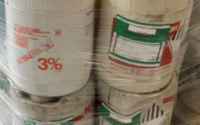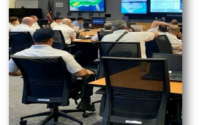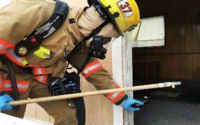What Is an LEPC and How Can It Help Me?
Michelle Cechowski, MS, CEM, FPEM
A Local Emergency Planning Committee, or LEPC, is a group of professionals, made up of first responders and subject matter experts, within a designated emergency planning district, who facilitate the preparation of and implementation of emergency response to chemical releases, whether accidental or intentional.
For context, we must go back to the 1980’s. Throughout the 1970’s and 80’s, all over the world, incidents of chemical releases were increasing and little to no regulations existed to protect people working in and around these facilities nor the environment.
Triggered by a faulty valve in Bhopal, India, a chemical was released at a facility which killed thousands of people in December 1984, followed by another incident in Institute, West Virgina in August 1985 that sent 125 people to the hospital, the United States Congress took proactive action for future incidents.
A new law called the Emergency Planning and Community-Right-To-Know Act, EPCRA, was enacted in October 1986. The law had dual purposes: first, to require facilities to report the presence of and release of hazardous chemicals to federal, state, and local authorities; second, the community right-to-know which requires facilities to report their inventories and uses of hazardous chemicals.

The first part of EPCRA (emergency planning) places the requirement of emergency planning on states and local agencies. To do this, EPCRA requires each state to establish a State Emergency Response Commission (SERC). Under the direction of the SERC, the state then must establish local emergency planning districts and a local emergency planning committee (LEPC) for each district.The governor of each state can establish a SERC in an executive order or by state law. Some states created their SERCs from existing organizations while other states created new organizations made up of different representatives from varying existing agencies, departments, groups, and associations. Once established, SERCs oversee the activities of the LEPCs by establishing procedures for the second part of the EPCRA.
Part two of EPCRA is the community-right-to-know section of the law. The EPCRA law states LEPCs must create procedures for receiving and processing requests from the public, develop and regularly update an emergency response plan (chemical release response plan or an all-hazards plan addressing chemical releases) to include the whole community, manage the chemical information submitted by facilities, and provide information to the public. Each SERC can augment these duties with additional ones related to the oversight of the transportation, storage, and use of hazardous materials to the LEPCs as well.

Every state is different in the way they established their LEPCs. For example, some states created an LEPC in each county or parish; others aligned LEPCs with regional-based government entities. No matter, all have the same responsibilities and requirements under EPCRA.
Each SERC, through the governor of each state, designates an agency to receive grant funds from the U.S. Department of Transportation’s Pipeline and Hazardous Materials Safety Administration (US DOT PHMSA) called the Hazardous Materials Emergency Preparedness (HMEP) grant. This grant was created in the 1990’s to “develop, improve, and carry out emergency plans” within the guidelines created by EPCRA. Once executed, the state agency then distributes the funds to the LEPCs. These grant funds can be used for trainings, exercises, and other programs to address the needs of the LEPC such as enhancing emergency response capabilities, conducting hazard analyses, and forming commodity flow studies.

LEPCs are non-profit community organizations and can receive many types of grants including state and federal grant funding. LEPCs provide the platform for multi-jurisdictional and multi-discipline collaborations, emergency response and recovery planning for all hazards, and overall strengthen the community’s resilience when faced with a disaster. I encourage you to contact your LEPC, attend a meeting, make connections, and get involved.
Resources: U.S. EPA Office of Emergency Management National LEPC-TEPC Handbook https://www.epa.gov/system/files/documents/2022-01/national-lepc-tepc-handbook-full-document.pdf.
U.S. DOT Pipeline and Hazardous Materials Safety Administration Hazardous Materials Emergency Preparedness (HMEP) Grant https://www.phmsa.dot.gov/about-phmsa/working-phmsa/grants/hazmat/hazardous-materials-emergency-preparedness-hmep-grant.



